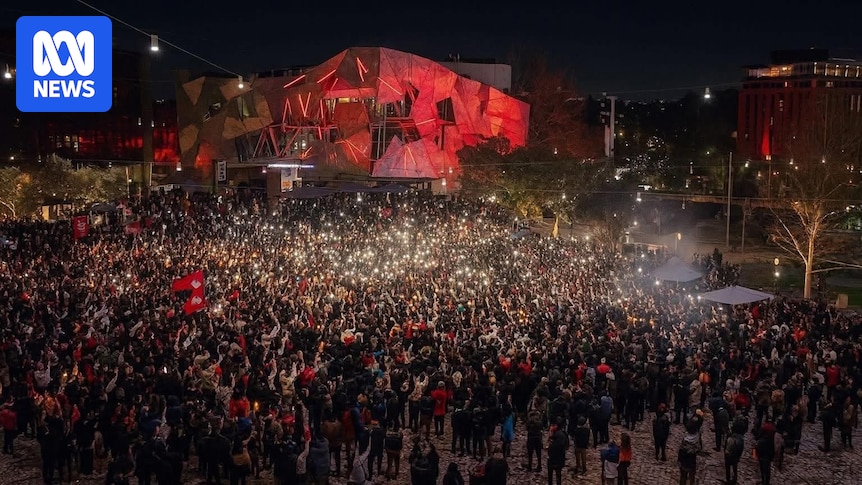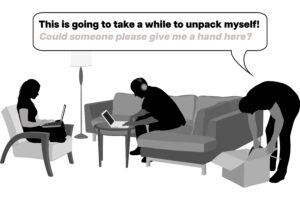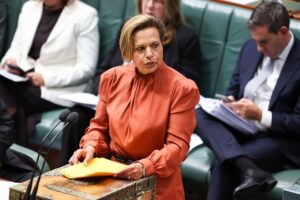
Frustrations with Nepal’s government have spilled beyond its borders, as the Nepalese diaspora in Australia takes to the streets in solidarity. Last night, the communities in Melbourne and Sydney held vigils to honor those who have lost their lives during the ongoing protests across Nepal.
Sparked by a controversial social media ban, the protests are fueled by deep-seated resentment among young Nepalese over high unemployment, wealth inequity, and rampant corruption. According to Nepal’s health ministry, the unrest has resulted in 30 deaths and injured 1,033 individuals since it began. The initial clashes between authorities and protesters left 19 people dead, triggering violent riots, the burning of parliament, and the resignation of Prime Minister KP Sharma Oli.
Vigils and Voices from Australia
In Melbourne’s Federation Square, Ram Gurung from the Nepalese Association of Victoria estimated that at least 1,000 people attended a twilight gathering to support the youth-led movement in Nepal. “We’re just trying to convey a message to the young generation who are fighting for the rights of Nepalese people that we are with you,” Mr. Gurung stated.
The Nepalese community across Australia has overwhelmingly supported the anti-corruption protests, though they condemn the violence. “Many political leaders do whatever they wanted … it’s totally a disaster and out of control,” Mr. Gurung expressed. He welcomed the resignation of the prime minister but noted it was “too late” to quell the unrest.
Personal Stories Amidst the Chaos
Bishal Sapkota, a 33-year-old permanent resident of Australia, shared a personal account of how his partner and three-month-old son were caught up in the protests while visiting family in Nepal. “Because of the protests, they had to physically carry him [my son] in their arms for the last half kilometer to get home safely, as driving wasn’t safe,” he recounted.
Mr. Sapkota supports the movement and criticizes the government’s response. “People lost lives then too, but not to this degree in such a short time frame,” he said. The Nepalese community in Australia is “devastated” by the violence, he added, condemning the destruction of public property, including historical buildings.
Historical Losses and Political Frustrations
Roshan Khattri Chhetri, who moved to Australia in 2014, echoed concerns over the government’s “fake promises” and “lies” over many years. Despite changes in leadership, meaningful change remains elusive, he noted. Speaking from his small business in Canberra, Mr. Khattri Chhetri expressed shock at how quickly Nepal descended into chaos after police resorted to shooting protesters.
He supports the anti-corruption agenda “100 percent” but hoped for peaceful protests. Seeing heritage buildings in flames was particularly painful, as they represent irreplaceable history. “The new government should create jobs in the country and development,” Mr. Khattri Chhetri urged, emphasizing the need for “zero corruption.”
Bleak Prospects for Nepalese Youth
For years, an exodus of young Nepalese has left the country due to unemployment, with about 15 percent of the population working abroad. The Nepalese community is the ninth largest migrant group in Australia, with over 179,000 Nepalese-born residents as of June 2023. Better employment prospects are desperately needed for young people, according to those interviewed.
Prerana Malla, who had planned to return to Nepal after graduating from university in Australia, was urged by her family to stay due to the lack of future prospects back home. Witnessing her country in turmoil, Ms. Malla aims to help both the diaspora and those in Nepal. “I did see some social media posts where people were panicking. They didn’t really know what to do; they felt very disturbed,” she said.
Ms. Malla and others are forming a group to provide mental health support, hoping to apply lessons learned from the 2015 earthquake to aid their people. “If we take a bit of time and discuss together, then our response can be bigger and better,” she suggested.
Despite the uncertainty, Mr. Sapkota sees hope for dialogue. “The crucial next step is the conversation that needs to happen between the protesters, the army, and the president,” he concluded.







